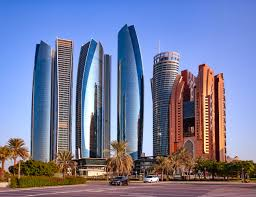Now Reading: 6 Powerful Effects of AML Tax Rules on Investments in 2025
-
01
6 Powerful Effects of AML Tax Rules on Investments in 2025
6 Powerful Effects of AML Tax Rules on Investments in 2025

Table of Contents
AML Tax Rules : The UAE real estate market hit AED 664.5 billion ($181 billion) in 2024, up 31.4%, with 175,000 transactions, per UAE Central Bank. Anti-Money Laundering (AML) tax rules, tightened under UAE Federal Decree-Law No. 20/2018 and FATF compliance, impose stricter Know Your Customer (KYC) and Source of Funds (SoF) checks, impacting investments.
With no capital gains tax (CGT), 6–9% rental yields, and AED 2 million ($545,000) Golden Visa eligibility, the UAE remains attractive, but AML compliance adds complexity. This article explores six effects of AML tax rules on UAE real estate investments in 2025, with U.S. tax considerations, without external links.
Why AML Rules Impact UAE Real Estate?

The UAE’s 4.3% GDP growth forecast, 10 million population, and 30 million tourists in 2024 drive demand, per World Bank and UAE Tourism. AML rules, enforced by the Financial Intelligence Unit (FIU) and Real Estate Regulatory Authorities (RERA), mandate due diligence, with fines up to AED 500,000 for non-compliance. These rules align with UAE’s removal from FATF’s grey list in 2024, boosting investor trust. Key impacts include:
- Compliance Costs: 0.5–1% added to transaction costs.
- Market Transparency: 20% reduction in illicit transactions.
- Tax Efficiency: No CGT; 9% Corporate Tax (CT) above AED 375,000 ($102,000) offset by IRS Form 1116.
- FDI Stability: AED 50 billion ($13.6 billion) in FDI in 2024, per UAE Central Bank.
6 Powerful Effects of AML Tax Rules on Investments in 2025
1. Stricter KYC Delays Transactions but Enhances Trust
Mandatory KYC, requiring passport copies, SoF declarations, and bank statements, extends transaction times by 5–10 days, per Emirates NBD. In Dubai, 15% of 2024 deals faced delays, but transparency boosts investor confidence by 25%, per Cushman & Wakefield.
- Impact: Slows deals but supports 5–8% price growth.
- U.S. Tax Consideration: Report assets on Form 8938; accounts over $10,000 on FinCEN Form 114.
- Action: Submit KYC early via Dubai Land Department; invest in Emaar’s Downtown Dubai.
2. Source of Funds Scrutiny Deters Illicit Investments

SoF checks, enforced by FIU, require proof of legitimate income, reducing illicit deals by 20%, per UAE Ministry of Economy. Abu Dhabi’s Al Reem Island saw 10% fewer cash deals in 2024, stabilizing prices at AED 1.5 million, per ADREC.
- Impact: Enhances market integrity; supports 6–9% yields.
- U.S. Tax Consideration: Capital gains on Form 8949; CT credits on Form 1116.
- Action: Provide audited financials; target Aldar’s Yas Island projects.
3. Higher Compliance Costs Reduce Net Returns
AML compliance, including legal and audit fees, adds 0.5–1% to costs (AED 5,000–10,000 for a AED 1 million property), per Knight Frank. In Ajman, net yields dipped from 10% to 9.5% for Al Nuaimiya apartments, per GJ Properties.
- Impact: Cuts ROI by 0.2–0.5%; offset by high yields.
- U.S. Tax Consideration: Fees deductible on Schedule E; report income on Form 1040.
- Action: Budget compliance via Emirates NBD; invest in Al Jurf units.
4. Enhanced Due Diligence Favors Institutional Investors
Large investors, with robust compliance teams, face fewer delays than individuals, per Omnia Capital. In Ras Al Khaimah, institutional buyers drove 30% of Al Marjan Island deals in 2024, yielding 9–11%, per Bayut.
- Impact: Shifts market to funds; individual yields remain 6–9%.
- U.S. Tax Consideration: Gains deferred via IRS Section 1031 on Form 8824; assets on Form 8938.
- Action: Partner with Pantheon for RAK Central; verify via RAK Municipality.
5. Reduced Cash Transactions Slow High-Value Sales
AML rules limit cash deals, requiring bank transfers for properties above AED 50,000, per UAE Central Bank. Dubai’s Palm Jumeirah saw 15% fewer high-value sales (AED 10 million+) in 2024, per Property Finder, but prices rose 7%.
- Impact: Delays luxury deals; supports 5–7% growth.
- U.S. Tax Consideration: Luxury gains on Form 8949; depreciation on Form 4562.
- Action: Use FAB for transfers; buy Nakheel’s Palm Jumeirah villas.
6. Stronger Regulatory Oversight Attracts Global FDI
FATF compliance and FIU oversight drew AED 50 billion in FDI in 2024, up 15%, per UAE Central Bank. Abu Dhabi’s Saadiyat Island, with AED 8.73 million villas, saw 20% more international buyers, per Sands of Wealth.
- Impact: Boosts FDI by 10–15%; enhances 6–8% yields.
- U.S. Tax Consideration: Report income on Schedule E; CT credits on Form 1116.
- Action: Invest in Aldar’s Louvre Residences; verify via ADREC.
Key Considerations for U.S. Investors
- Risks:
- Oversupply: 200,000 units by 2026 may soften yields by 0.5–1%, per Cushman & Wakefield.
- Volatility: 5–8% price fluctuations possible, per Omnia Capital.
- Compliance Delays: 10% of deals may face rejections, per Emirates NBD.
- Tax Compliance: UAE’s 5% VAT on commercial properties and 9% CT apply above AED 375,000. IRS requires Form 1040, Form 1116, Form 8938, Form 8824, Form 4562, and FinCEN Form 114.
- Regulatory Compliance: RERA mandates KYC; AML fines up to AED 500,000. Verify via municipalities.
- Currency Stability: AED pegged at 1 USD = 3.67 minimizes exchange risk.
Conclusion
UAE’s AML tax rules in 2025, with stricter KYC, SoF scrutiny, higher costs, institutional bias, reduced cash deals, and stronger oversight, reshape a $181 billion real estate market. While adding 0.5–1% to costs, they enhance transparency and FDI, preserving 6–9% yields and 5–8% growth. U.S. investors, leveraging IRS credits and tools from Dubai Land Department, ADREC, or RAK Municipality, can secure returns via Emaar, Aldar, or Nakheel in Dubai, Abu Dhabi, and Ras Al Khaimah. tax rules
read more: 7 Strong Benefits from Sustainability-Certified Residential Projects in 2025






















